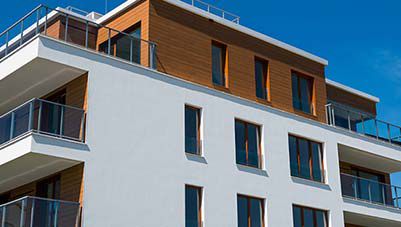Understanding how to convert meters to square meters is essential for anyone dealing with real estate, construction, or property finance. This knowledge becomes especially important when applying for a loan against property, where accurate property area measurements directly influence the property's valuation and the loan amount you may qualify for. While both meter and square meter belong to the metric system, they serve very different purposes—one measures length, and the other measures area. Confusing the two can result in costly mistakes, especially during property evaluations, documentation, or mortgage loan approvals. Read on to know the fundamentals of meter and square meter, their historical background, and how to correctly convert between them to avoid errors and make informed financial decisions.
What is a meter?
A meter (m) is the base unit of length in the International System of Units (SI). It is used globally to measure distance or length—how long or tall something is.
Defined more precisely, one meter is the length of the path travelled by light in a vacuum in 1/299,792,458 seconds. It is a linear measurement and applies to one-dimensional spaces. For example:
- A plank of wood that is 2 meters long.
- A room that is 5 meters wide.
Meters can be converted into other units such as centimeters (1 meter = 100 centimeters) and kilometers (1,000 meters = 1 kilometer), making it highly versatile for practical applications.
History of the meter
The meter originated in the late 18th century during the French Revolution, a time when the need for standardization of weights and measures was critical. The French Academy of Sciences defined the meter in 1791 as one ten-millionth of the distance from the equator to the North Pole, measured along the meridian through Paris. This initial definition was later replaced by physical standards and, eventually, by more precise scientific definitions. In 1960, the meter was redefined in terms of the wavelength of krypton-86 radiation. Finally, in 1983, the current definition—based on the speed of light—was adopted. This change ensured maximum precision using modern scientific instrumentation.
Need funds but don’t want to part with your property? A loan against property offers the ideal solution. Pledge your property and get a substantial loan amount while continuing to own and use it. Whether it’s for personal goals or business growth, your property can finance your dreams. Get up to Rs. 10.50 Crore* against your property within 72 hours* of the approval.
What is a square meter?
A square meter (m²) is a unit of area, representing the space within a two-dimensional boundary. Unlike a meter which measures linear distance, a square meter measures surface coverage.
Mathematically, one square meter is the area of a square with each side equal to one meter. In practice, square meters are commonly used to measure:
- The floor area of a room or building.
- The surface area of a garden or field.
- Plot sizes in real estate.
To calculate square meters, you multiply length × width, where both dimensions are in meters.
History of square meter
The concept of area measurement dates back to ancient civilisations such as Egypt, Mesopotamia, and Greece, where land measurement was vital for taxation and agriculture. However, the square meter as a formal unit of area was established alongside the metric system in France during the late 18th century.
Once the meter was officially defined, the square meter naturally followed as its area counterpart. It quickly became the standard unit for surface area across scientific, commercial, and engineering applications. As the metric system spread globally, the square meter became universally accepted, replacing other traditional units of area like the square yard or acre.
Meter to square meter conversion formula
It is a common misconception that meters and square meters can be directly converted by multiplying or dividing by a fixed number.
Key formula:
To convert meters to square meters, you need to know two dimensions: length and width.
Area (m²)=Length (m)×Width (m)
For example:
- A room that is 5 meters long and 4 meters wide has an area of:
5×4=20 m²
Important to note: You cannot convert 1 meter to 1 square meter unless you know both length and width. The square meter is derived from multiplying two linear measurements.
Meter to square meter conversion units
| Length (m) | Width (m) | Area (m²) |
|---|---|---|
| 1 | 1 | 1 |
| 2 | 1 | 2 |
| 2 | 2 | 4 |
| 3 | 2 | 6 |
| 5 | 4 | 20 |
| 10 | 5 | 50 |
| 20 | 10 | 200 |
| 50 | 30 | 1500 |
Square meter to meter conversion units
Square meters (m²) |
Meters (m) |
Square meters (m²) |
Meters (m) |
Square meters (m²) |
Meters (m) |
Square meters (m²) |
Meters (m) |
0.5 m² |
0.7071 m |
10.5 m² |
3.24 m |
21 m² |
4.583 m |
41 m² |
6.403 m |
1 m² |
1 m |
11 m² |
3.317 m |
22 m² |
4.69 m |
42 m² |
6.481 m |
1.5 m² |
1.225 m |
11.5 m² |
3.391 m |
23 m² |
4.796 m |
43 m² |
6.557 m |
2 m² |
1.414 m |
12 m² |
3.464 m |
24 m² |
4.899 m |
44 m² |
6.633 m |
2.5 m² |
1.581 m |
12.5 m² |
3.536 m |
25 m² |
5 m |
45 m² |
6.708 m |
3 m² |
1.732 m |
13 m² |
3.606 m |
26 m² |
5.099 m |
46 m² |
6.782 m |
3.5 m² |
1.871 m |
13.5 m² |
3.674 m |
27 m² |
5.196 m |
47 m² |
6.856 m |
4 m² |
2 m |
14 m² |
3.742 m |
28 m² |
5.292 m |
48 m² |
6.928 m |
4.5 m² |
2.121 m |
14.5 m² |
3.808 m |
29 m² |
5.385 m |
49 m² |
7 m |
5 m² |
2.236 m |
15 m² |
3.873 m |
30 m² |
5.477 m |
50 m² |
7.071 m |
5.5 m² |
2.345 m |
15.5 m² |
3.937 m |
31 m² |
5.568 m |
55 m² |
7.416 m |
6 m² |
2.449 m |
16 m² |
4 m |
32 m² |
5.657 m |
60 m² |
7.746 m |
6.5 m² |
2.55 m |
16.5 m² |
4.062 m |
33 m² |
5.745 m |
65 m² |
8.062 m |
7 m² |
2.646 m |
17 m² |
4.123 m |
34 m² |
5.831 m |
70 m² |
8.367 m |
7.5 m² |
2.739 m |
17.5 m² |
4.183 m |
35 m² |
5.916 m |
75 m² |
8.66 m |
8 m² |
2.828 m |
18 m² |
4.243 m |
36 m² |
6 m |
80 m² |
8.944 m |
8.5 m² |
2.915 m |
18.5 m² |
4.301 m |
37 m² |
6.083 m |
85 m² |
9.22 m |
9 m² |
3 m |
19 m² |
4.359 m |
38 m² |
6.164 m |
90 m² |
9.487 m |
9.5 m² |
3.082 m |
19.5 m² |
4.416 m |
39 m² |
6.245 m |
95 m² |
9.747 m |
10 m² |
3.162 m |
20 m² |
4.472 m |
40 m² |
6.325 m |
100 m² |
10 m |
Unlocking financial potential with loan against property
Now that you well-versed with land conversions, let us explore funding options to meet your financial needs. Whether you own a residential or a commercial property, Bajaj Finserv Loan Against Property allows you to leverage your real estate for various financial needs, including business expansion, wedding, education financing, or medical emergencies. Enjoy competitive interest rates, flexible repayment plans, quick loan approval, and easy eligibility criteria with Bajaj Finance.
Benefits of Bajaj Finserv Loan Against Property
1. Competitive interest rates: Bajaj Finance offers attractive rates, making borrowing affordable.
2. Fast approval: Experience swift loan approval and disbursal to access funds during urgent situations.
3. Simple eligibility: The qualification process is easy, making loan access hassle-free.
Why let your property's value sit idle? With a loan against property from Bajaj Finance, you can access high-value funds at lower interest rates—perfect for business expansion, education, or medical needs. Use your residential or commercial property as collateral and turn built-up equity into financial opportunity. Get funds within 72 hours* of approval
Conclusion
Understanding the difference between meters and square meters is crucial for accurate measurement, especially when evaluating property area for buying, selling, or financing. While a meter measures length, a square meter quantifies area—making it vital in real estate and construction calculations. This distinction is particularly important when applying for a loan against property, as the property’s size (measured in square meters) directly impacts its valuation and the loan amount you may qualify for. Financial institutions assess property area in square meters to determine market value and loan-to-value (LTV) ratios. Any miscalculation in units could result in undervaluation or documentation errors. By mastering unit conversions, you ensure accuracy and transparency in property assessments, an essential step when leveraging your real estate asset for financing. Your property can come to your rescue when needed. Secure our loan against property and access funds quickly.












